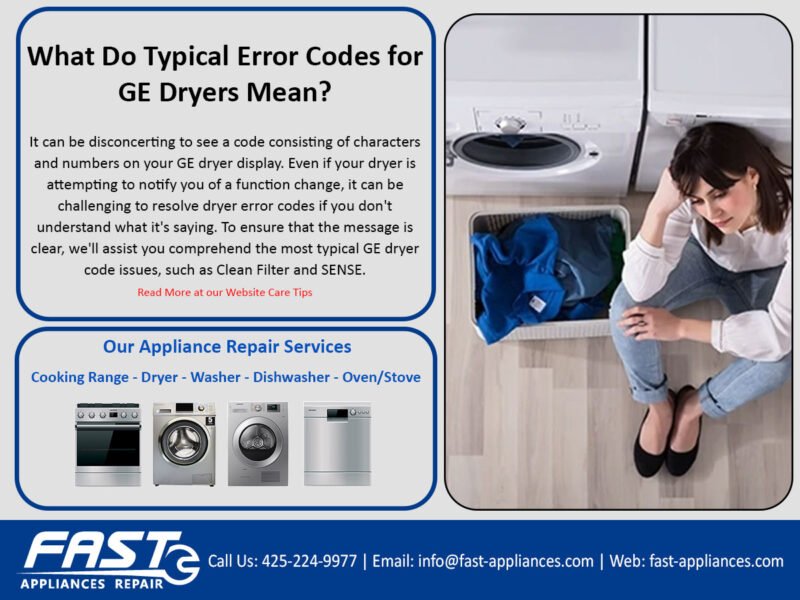
In a nutshell, an Error Code E3 in GE dryers generally implies a problem with the control board or the electrical system within the dryer. Think of it as your dryer waving a little red flag saying, “Hey, something’s up in here!” While it might sound technical, the causes of an E3 error are pretty common and often easy enough for a beginner to understand and maybe even fix. Let’s dive into what might be causing this pesky problem and how you can address it.
Understanding the Role of the Control Board
Picture the control board like the brain of your dryer. It’s the hub where all the magic happens—or should happen—coordinating different parts to ensure your clothes come out warm, fluffy, and dry. But sometimes, just like any electronic brain, it can glitch or short out. This is often due to electrical surges, moisture getting into the system, or simple wear and tear over time.
When the control board starts throwing the E3 error code, it might mean it’s having trouble processing the commands and sending signals to different parts of the dryer. You may find that the dryer won’t start, it stops mid-cycle, or it simply won’t behave as expected. It’s like when your computer crashes because it’s trying to do too many things at once.
To troubleshoot this, first, try resetting your dryer. Unplug it or switch off the breaker for about five minutes, then power it back on. This can give the control board a chance to reset itself, sort of a like a quick power nap to refresh its processes. If the error persists, the control board might need a closer inspection or replacement, which could require professional help.
Electrical Connections and Wiring Issues
Now, imagine the electrical connections within your dryer like the veins in your body, carrying necessary signals and power to keep everything working smoothly. If there’s a fault somewhere in these lines, your dryer might throw an E3 error. Loose wires, frayed cords, or even just a bit of debris can cause disruptions.
Start by examining power and wiring connections if you’re comfortable doing so and if you have the right tools (ensure the power is off to avoid any shock hazards!). Look for obvious signs like loose connections or visibly damaged wires. It’s like checking to see if a lightbulb is screwed in all the way when it flickers. Sometimes, just tightening a connection can resolve the issue.
However, remember that messing with electrical components can be tricky and it’s best to call in a professional if you’re not sure or if things look complicated. It’s not worth risking an electric shock or inadvertently causing a bigger issue.
Sensor Failures and Their Impact
Your dryer is full of sensors that keep it running smoothly by monitoring things like temperature and moisture levels. When one of these sensors fails, you might see an E3 error. Think of a sensor like a traffic light, directing signals and ensuring everything moves smoothly. If it stops working, it’s like a traffic light stuck on red – everything comes to a halt.
To diagnose sensor issues, you might need to run a diagnostic test on your dryer, which usually involves a specific button sequence. Check your user manual for the exact steps, as they can vary by model. This test can sometimes pinpoint sensor problems, giving you a better idea of what’s going wrong.
Should you find a faulty sensor, it often requires replacement to get things back on track. While some sensors might be easily accessible for those who are handy, it could be time to call in a repair technician, especially if the thought of digging into your dryer makes you uneasy.
Moving Forward and Avoiding Future Errors
Once you’ve tackled the E3 error, you’re probably wondering how to keep it from happening again. Regular maintenance is key. Make sure to keep your dryer clean, both inside and out. Lint accumulation can cause overheating and lead to electrical issues. It’s like getting oil changes for your car; regular upkeep prevents bigger problems down the road.
Also, consider installing a surge protector to safeguard your dryer’s electronics from power surges. And when it comes to moisture issues, ensure your laundry area is well-ventilated, as excess humidity can affect the dryer’s electrical components.
Finally, a little care goes a long way. Avoid overloading the dryer, as this can strain the motor and sensors. Following these simple steps can help extend the life of your dryer and hopefully keep those pesky error codes at bay.
With these insights, tackling an E3 error doesn’t seem so daunting, right? You’ve got the know-how to figure out what’s going wrong, and even if you do need a little help, you know exactly where to start. Here’s to smooth-drying from here on out!